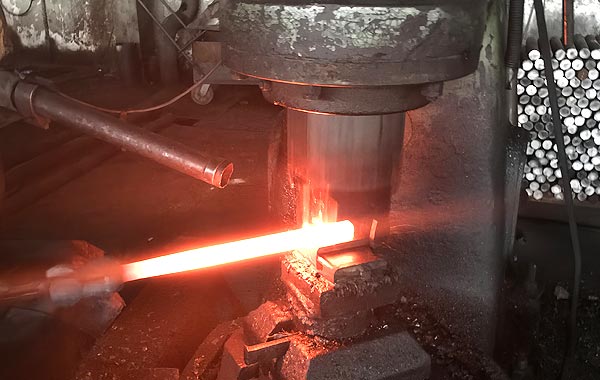Air hammer forging is a free forging method that utilizes compressed air to drive the hammer head to repeatedly strike the workpiece. It is widely used in metal plastic forming and billet preparation, particularly suitable for small to medium production runs and the initial shaping of large and complex forgings.
1. Working Principle
An air hammer consists of a cylinder, piston, hammer head, and control valve system. Compressed air enters the cylinder, driving the piston to move up and down, which in turn drives the hammer head to impact the workpiece at high frequency. Because the striking energy is controllable, the operator can flexibly adjust the force and frequency according to the workpiece size and deformation requirements.
2. Main Features
(1). High Flexibility: Capable of performing various free forging operations such as upsetting, drawing-out, punching, and bending.
(2). High Forming Efficiency: With high impact frequency, it enables significant plastic deformation in a short period of time.
(3). Wide Adaptability: Applicable to carbon steel, alloy steel, stainless steel, and certain non-ferrous metals.
(4). Process Controllability: By adjusting air pressure and operating methods, a good balance between energy and precision can be achieved.
3. Applications
Air hammers are commonly used to manufacture shafts, rings, discs, and other large parts requiring initial free forging. In preform billet shaping before die forging, air hammers effectively refine the internal structure of metals, eliminate shrinkage cavities and porosity, and enhance the mechanical properties of forgings.
4. Development and Improvements
With the growing demand for high-performance forgings, air hammers are evolving toward larger capacities and higher automation. Modern air hammers have been optimized in terms of energy control and noise reduction, while the integration of CNC operation systems has improved forging accuracy and production stability.


